Best Shots review: The Department of Truth #1 - #5 warns of the power of conspiracy theories
Batman writer James Tynion IV explores the real world of fake news in The Department of Truth
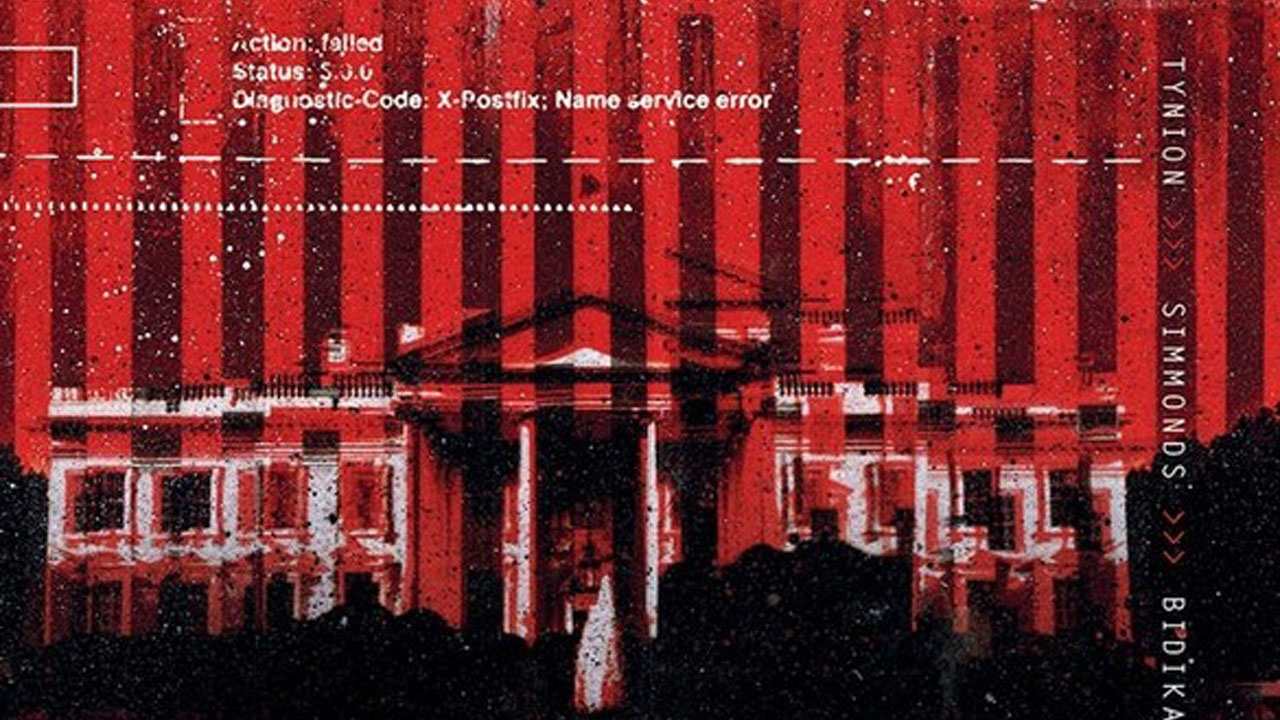
I initially read Department of Truth #1 - #5 on the night of January 20, 2021. The United States was celebrating what thankfully turned out to be a peaceful transition of power. One man was on a plane heading out of DC and another one was moving into the White House to begin his term in the office of President of the United States. After the days, weeks, and months leading up to that day, many people weren't too sure what was going to happen. All of us had to place our trust in a system that was telling us that we just lived through a legitimate election no matter how much some people didn't want to accept the results. We had to believe in the system but we had also been told that the system had been corrupt and stolen. Many of us continue today to believe that the wrong man was on the plane flying out of Washington DC to Florida. They were told over and over that the media was fake; that alternate facts existed; that more people voted for their candidate than for the other one. They were told this over days, weeks, months, and years until they believed it. People from the most rural areas of the country up through the highest halls of our Congress either crusaded for or rebelled against the country for this belief depending on your version of the truth.
Written by James Tynion IV
Art by Martin Simmonds
Lettering by Aditya Bidikar
Published by Image Comics
'Rama Rating: 9 out of 10
James Tynion IV and Martin Simmonds approach The Department of Truth as a multifaceted argument. The first issue starts with an FBI agent Cole Turner tasked with keeping track of conspiracy theorists. He's a skeptic at a Flat-Earth conference, there to root out the origins and money behind these unscientific concepts. But he's also trying to understand what leads people to believe in something that seems so obviously false.
"Son, the world is round. Get me a big laser pointer and a few meter sticks and I can prove it to you," he's told once he's "rescued" from the conference where he thinks he's seen undeniable proof of a flat Earth. These beliefs seem so clearly false but Turner is trying to find a thread of truth in these theories. He's looking for some explanation of why the world is like it is.
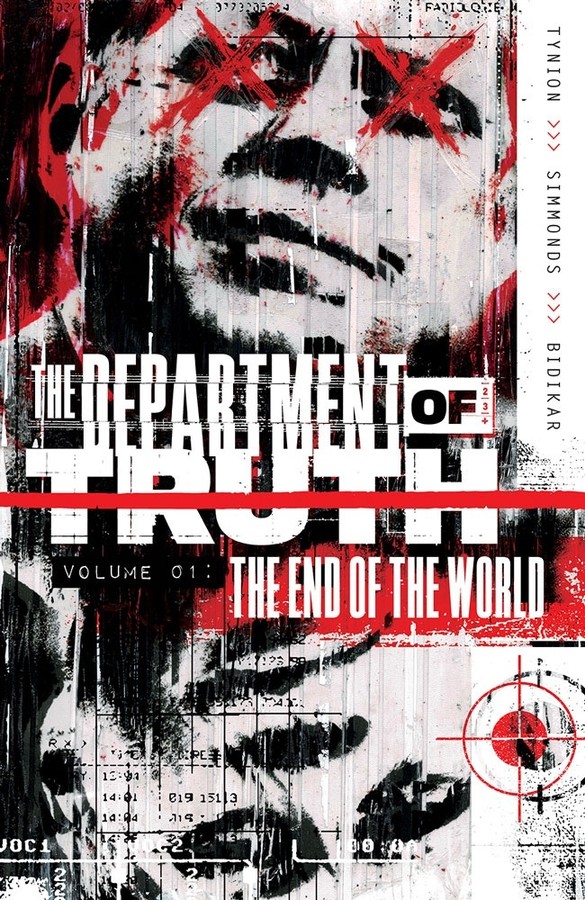
Turner studies these conspiracies, where they come from, who believes in them, and more importantly why but Tynion plants just enough doubt in Turner, just enough uncertainty in his own beliefs that it wouldn't be difficult to push him over to the other side to be a believer. As Turner is exposed to proof about a flat Earth and the true edge of the world, he's recruited by a woman named Ruby and a director whose own identity is one of these conspiracy theories, maybe one of the greatest ones, to be the newest agent of the Department of Truth. The director lays it out for Turner,
"The more people believe in something, the more true that thing becomes. The more reality tips in the favor of that belief… That is why this organization exists. We have spent the last century making sure that conspiracy theories stay conspiracy theories."
Through Cole Turner, Tynion sets us up to be pulled into this rotating trap of belief and skepticism. When you look at the state of the world these last few months and years, there's so much that's ripe for conspiracies. Everything from elections to vaccines to insurrections would make so much more sense if all of the conspiracies and theories were just true. While the allure of Turner, Ruby (pay attention to her name and who the director is revealed to be in the comic), and their mysterious director draws us into this book, the mysteries and half-truths fill our thoughts and dreams, almost distracting us from what's really happening.
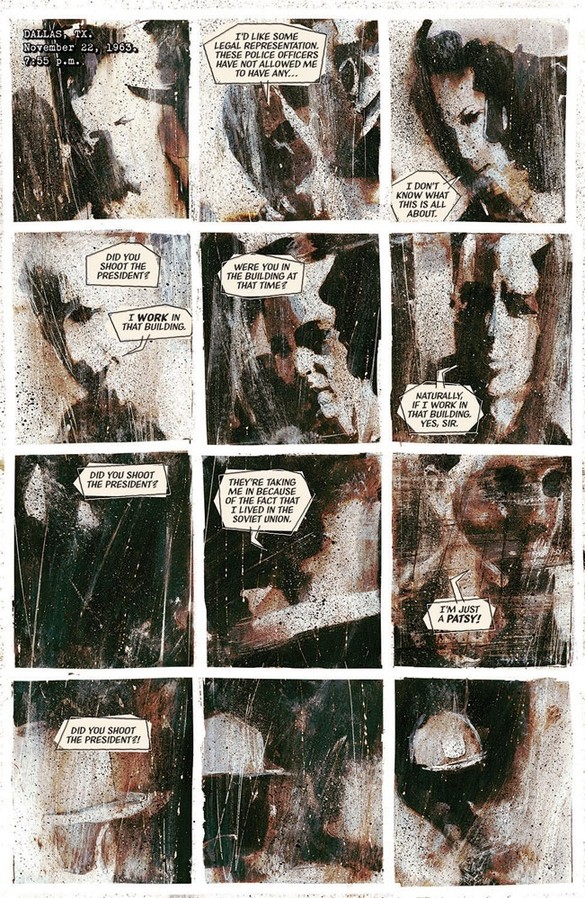
The Department of Truth #1 preview
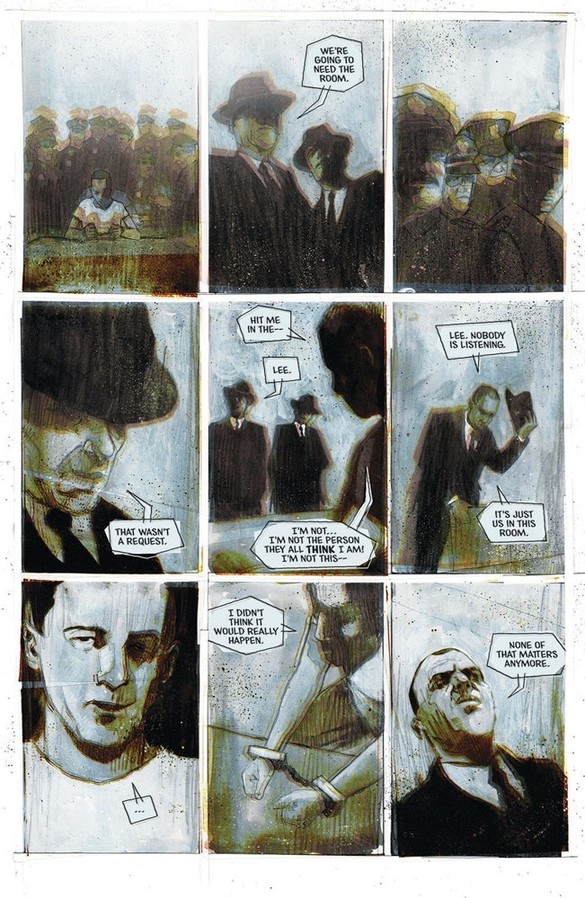

The power and the divine mystery of The Department of Truth are what happens if enough people believe in something. One of the department's analysts references Santa Claus and implies that they've had to kill him once or twice because enough kids in the world believed in him. Imagine if enough people believed that the earth was flat or that Lee Harvey Oswald assassinated President Kennedy on orders from the CIA. What if there is some kind of critical mass of belief where the untrue becomes true?
Get the best comic news, insights, opinions, analysis and more!
There's an X-Files vibe to this title, that whole 'the truth is out there' thought that rumbles through the back of our heads as we immerse ourselves in these theories and ideas. Cole Turner is a modern-day Fox Mulder, just looking for the truth on a whole different level. In false flags, bad actors, and even Illuminati theories we've been exposed to, we can see how recent beliefs like rigged elections can turn into truly stolen elections. People who represented the last United States President talked about 'alternative facts' on a Sunday morning news show and suddenly alternative facts were a real thing.
Martin Simmonds' artwork and Aditya Bidikar's lettering contribute to the unsteady truth that underlies Tynion's story. Looking at Simmonds' drawings and paintings is like squinting at the world, unable to quite focus on anything as you're trying to find order through the blurriness. The edges of everything blur. Color and light get distorted and suddenly you're trying to see beyond all of these little failures of your vision and trying to make sense of the world. You're trying to see the world behind the reality. In his art, plot and perception merge, making us believe in these things that don't exist. As a child of the Satanic Panic years, Turner's grip on reality is either delusional or more perceptive than ours. He dead dead men and devils, accepting the reality of them even as his brain tells them that they are not there. The art obscures the distinction of what Turner is experiencing and what he thinks is happening. It obscures the truth.
In Bidikar's word balloons, the solid borders of the balloons don't quite match up with the white space of the balloon. Bidikar adds to the unsteadiness as if the character's dialogue isn't in sync with the characters themselves or the reality that they are moving through. Tynion and Simmonds use this to bring us into the character's world but also keep us slightly separated like it. We're like Turner being at the Flat Earth conference at the beginning of the comic - everything is understandable but there is something underneath the words that are trying to show us something more that we're just not prepared to experience.
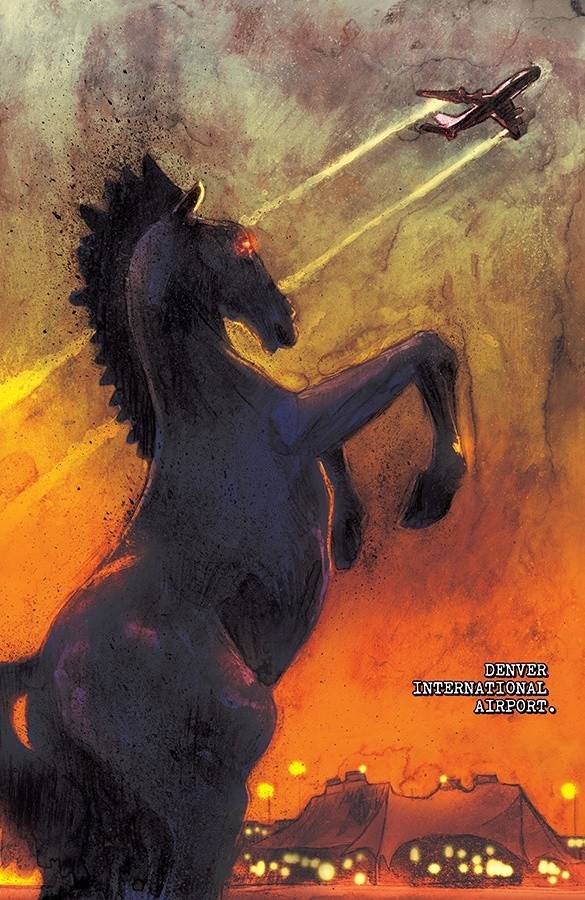
The Department of Truth #5 preview


The truth is out there if you're willing to believe in it. But if I'm being completely honest, there are days that I'm not too sure what to believe. I know what I want to believe but sometimes the opposition just makes more sense or, at least, makes simpler sense. I want to be empirical in my belief, I want to be kind in them, I want to be compassionate in them and sometimes that just feels harder than it should be.
So what happens when I give into wanting something that makes more sense than what I have? What happens when you, your family, neighbors, and your old high school crush that you're friends with now on Facebook believe in conspiracies and untruths? If enough of us believe, can we make it real as Tynion and Simmonds propose in this book? Tynion and Simmonds don't want you to believe in conspiracy theories but they demand that you believe in the power of them.
The Department of Truth #1 through #5 is on sale now, with a collection of this inaugural arc - titled The Department of Truth Vol. 1: The End of the World - due out February 24 in comic shops (and digitally), then March 2 in bookstores.
Read Newsarama's interview with James Tynion IV and Martin Simmonds on The Department of Truth.
Scott is a regular contributor for Panel Patter, GamesRadar, and Newsarama, covering comic books since 2002. He specialises in comic book reviews, and also runs the blog I Lost It At the Comic Shop.


